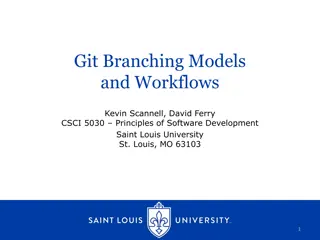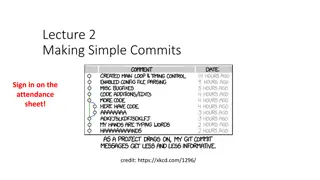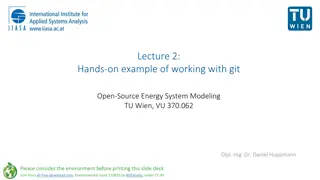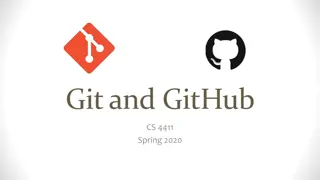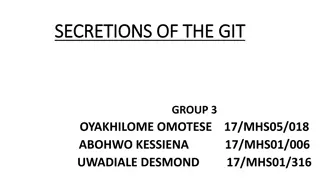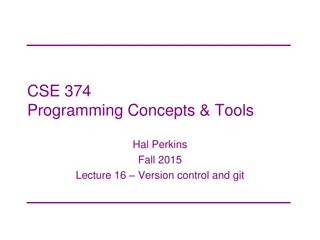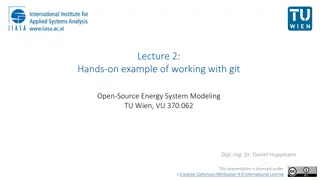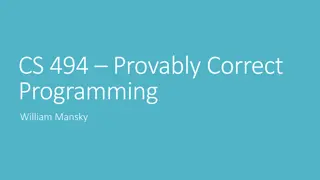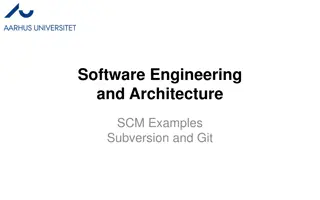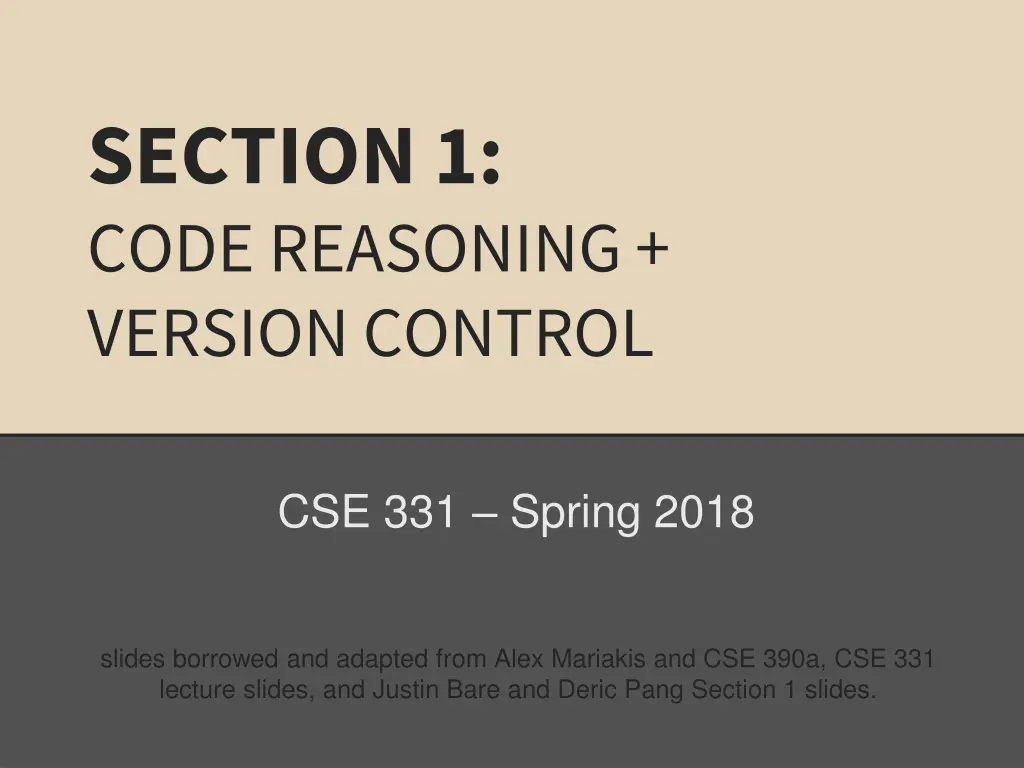
Understanding Forward Reasoning in Code Analysis
Explore the concept of forward reasoning in code analysis, which involves determining the postcondition of code execution based on given preconditions. Learn how to reason through code to ensure correctness and achieve desired outcomes. Examples and explanations provided.
Download Presentation

Please find below an Image/Link to download the presentation.
The content on the website is provided AS IS for your information and personal use only. It may not be sold, licensed, or shared on other websites without obtaining consent from the author. If you encounter any issues during the download, it is possible that the publisher has removed the file from their server.
You are allowed to download the files provided on this website for personal or commercial use, subject to the condition that they are used lawfully. All files are the property of their respective owners.
The content on the website is provided AS IS for your information and personal use only. It may not be sold, licensed, or shared on other websites without obtaining consent from the author.
E N D
Presentation Transcript
SECTION 1: CODE REASONING + VERSION CONTROL CSE 331 Spring 2018 slides borrowed and adapted from Alex Mariakis and CSE 390a, CSE 331 lecture slides, and Justin Bare and Deric Pang Section 1 slides.
OUTLINE Introductions Code Reasoning Forward Reasoning Backward Reasoning Weaker vs. Stronger statements Version control
REASONING ABOUT CODE Two purposes Prove our code is correct Understand why code is correct Forward reasoning: determine what follows from initial conditions Backward reasoning: determine sufficient conditions to obtain a certain result
TERMINOLOGY The program state is the values of all the (relevant) variables An assertion is a logical formula referring to the program state (e.g., contents of variables) at a given point An assertion holds for a program state if the formula is true when those values are substituted for the variables
TERMINOLOGY An assertion before the code is a precondition these represent assumptions about when that code is used An assertion after the code is a postcondition these represent what we want the code to accomplish
FORWARD REASONING Given: Precondition Finds: postcondition for given precondition. Aka Finds program state after executing code, when using given assumptions of program state before execution.
FORWARD REASONING // {x >= 0, y >= 0} y = 16; // x = x + y // x = sqrt(x) // y = y - x //
FORWARD REASONING // {x >= 0, y >= 0} y = 16; // {x >= 0, y = 16} x = x + y // x = sqrt(x) // y = y - x //
FORWARD REASONING // {x >= 0, y >= 0} y = 16; // {x >= 0, y = 16} x = x + y // {x >= 16, y = 16} x = sqrt(x) // y = y - x //
FORWARD REASONING // {x >= 0, y >= 0} y = 16; // {x >= 0, y = 16} x = x + y // {x >= 16, y = 16} x = sqrt(x) // {x >= 4, y = 16} y = y - x //
FORWARD REASONING // {x >= 0, y >= 0} y = 16; // {x >= 0, y = 16} x = x + y // {x >= 16, y = 16} x = sqrt(x) // {x >= 4, y = 16} y = y - x // {x >= 4, y <= 12}
FORWARD REASONING // {true} if (x>0) { // abs = x // } else { // abs = -x // } // //
FORWARD REASONING // {true} if (x>0) { // {x > 0} abs = x // } else { // {x <= 0} abs = -x // } // //
FORWARD REASONING // {true} if (x>0) { // {x > 0} abs = x // {x > 0, abs = x} } else { // {x <= 0} abs = -x // {x <= 0, abs = -x} } // //
FORWARD REASONING // {true} if (x>0) { // {x > 0} abs = x // {x > 0, abs = x} } else { // {x <= 0} abs = -x // {x <= 0, abs = -x} } // {x > 0, abs = x OR x <= 0, abs = -x} //
FORWARD REASONING // {true} if (x>0) { // {x > 0} abs = x // {x > 0, abs = x} } else { // {x <= 0} abs = -x // {x <= 0, abs = -x} } // {x > 0, abs = x OR x <= 0, abs = -x} // {abs = |x|}
BACKWARD REASONING Given: Postcondition Finds: The weakest precondition for given postcondition.
ASIDE: WEAKEST PRECONDTION? What is weakest precondition? Well, precondition is just a statement, so Better ask what makes a statement weaker vs. Stronger?
WEAKER VS. STRONGER Weaker statements = more general Stronger statements = more specific aka more informational Stronger statements are more restrictive Ex: x = 16 is stronger than x > 0 Ex: Alex is an awesome TA is stronger than Alex is a TA If A implies B, A is stronger and B is weaker. If B implies A, B is stronger and A is weaker. If neither, then A and B not comparable.
BACKWARD REASONING Given: Postcondition Finds: The weakest precondition for given postcondition. So, finds most general assumption code will use to get given postcondition.
BACKWARD REASONING // a = x + b; // c = 2b - 4 // x = a + c // {x > 0}
BACKWARD REASONING // a = x + b; // c = 2b - 4 // {a + c > 0} x = a + c // {x > 0}
BACKWARD REASONING // a = x + b; // {a + 2b 4 > 0} c = 2b - 4 // {a + c > 0} x = a + c // {x > 0}
BACKWARD REASONING // Backward reasoning is used to determine the // weakest precondition // {x + 3b - 4 > 0} a = x + b; // {a + 2b 4 > 0} c = 2b - 4 // {a + c > 0} x = a + c // {x > 0}
HOARE TRIPLES Hoare triples are just an extension of logical implication Hoare triple: {P} S {Q} P = precondition S = single line of code Q = postcondition A Hoare triple can be valid or invalid Valid if for all states for which P holds, executing S always produces a state for which Q holds Invalid otherwise
HOARE TRIPLE EXAMPLE #1 {x != 0} y = x*x; {y > 0} Is this valid?
HOARE TRIPLE EXAMPLE #1 {x != 0} y = x*x; {y > 0} Is this valid? Yes
HOARE TRIPLE EXAMPLE #2 Is {false} S {Q} a valid Hoare triple?
HOARE TRIPLE EXAMPLE #2 Is {false} S {Q} a valid Hoare triple? Yes. Because P is false, there are no conditions when P holds Therefore, for all states where P holds (i.e. none) executing S will produce a state in which Q holds
HOARE TRIPLE EXAMPLE #3 Is {P} S {true} a valid Hoare triple?
HOARE TRIPLE EXAMPLE #3 Is {P} S {true} a valid Hoare triple? Yes. Any state for which P holds that is followed by the execution of S will produce some state For any state, true always holds (i.e. true is true)
VERSION CONTROL VERSION CONTROL
WHAT IS VERSION CONTROL? Also known as source control/revision control System for tracking changes to code Software for developing software Essential for managing projects See a history of changes Revert back to an older version Merge changes from multiple sources We ll be talking about git/GitLab, but there are alternatives Subversion, Mercurial, CVS Email, Dropbox, USB sticks (don t even think of doing this)
VERSION CONTROL ORGANIZATION A repository stores the master copy of the project Repository Someone creates the repo for a new project Then nobody touches this copy directly Lives on a server everyone can access Each person clones her own working copy git Working copy Makes a local copy of the repo You ll always work off of this copy The version control system syncs the repo and working copy (with your help) Working copy
REPOSITORY Can create the repository anywhere Can be on the same computer that you re going to work on, which might be ok for a personal project where you just want rollback protection But, usually you want the repository to be robust: On a computer that s up and running 24/7 Everyone always has access to the project On a computer that has a redundant file system No more worries about that hard disk crash wiping away your project! We ll use CSE GitLab very similar to GitHub but tied to CSE accounts and authentication
VERSION CONTROL COMMON ACTIONS Most common commands: commit / push Repository integrate changes from your working copy into the repository pull pull git integrate changes into your working copy from the repository push Working copy
VERSION CONTROL UPDATING FILES In a bit more detail: You make some local changes, test them, etc., then git add tell git which changed files you want to save in repo git commit save all files you ve add ed in the local repo copy as an identifiable update git push synchronize with the GitLab repo by pushing local committed changes Repository pull git push Working copy
VERSION CONTROL COMMON ACTIONS (CONT.) Other common commands: add, rm Repository add or delete a file in the working copy just putting a new file in your working copy does not add it to the repo! still need to commit to make permanent pull git push Working copy
THIS QUARTER We distribute starter code by adding it to your GitLab repo. You retrieve it with git clone the first time then git pull for later assignments You will write code using Eclipse You turn in your files by adding them to the repo, committing your changes, and eventually pushing accumulated changes to GitLab You turn in an assignment by tagging your repo and pushing the tag to GitLab You will validate your homework by SSHing onto attu, cloning your repo, and running an Ant build file
331 VERSION CONTROL create/push Repository commit/push clone/pull Working copy for grading add Working copy
AVOIDING GIT PROBLEMS For the projects in this class, you should never have to merge Except when the staff pushes out a new assignment Rules of thumb for working in multiple places: Each time before you start working on your assignment, git pull to get the latest code Each time after you are done working for a while, git add/commit/push in order to update the repository with the latest code


